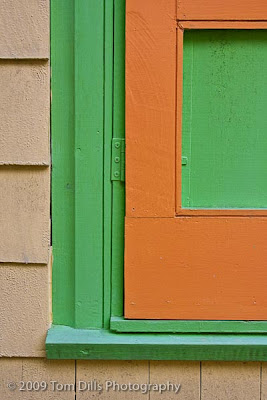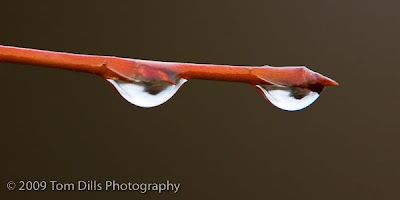
I was recently on a photography workshop with a well-known nature photographer and one of the participants asked the leader “between us, tell me – who are the 4 best photographers in the Unnamed Camera Club?” Just like in the old Dean Witter commercials all of the ears within listening distance perked up, and back came the answer, but not what the questioner was hoping for. He said – and I’m paraphrasing – that you can’t evaluate “best.” It’s not about “best.” Two different photographers, or for that matter a group of photographers, can each have completely different styles, use completely different equipment and present their final images in completely different ways. What distinguishes them may be content, technical excellence or emotional response. But that just makes them different, not better.
To carry this example a little further, think about other things you know personally. Do you like to read? Who is a better writer, Stephen King or Dan Brown? How about wine? Is Stag’s Leap a better wine than Kendall Jackson? Is Carlos Santana a better guitar player than Eric Clapton? Is Art Morris a better photographer than Joe McNally? Each choice is distinctively different, each choice is excellent in its own way, each choice is very, very good at what they do. But best? It’s not about best.
When evaluating anything, books, wine, photographs, we have to decide what it is that matters most to us. For photography do we want technical excellence? Define that. Does that mean excellent in-camera technique, excellent post processing, beautifully hand-crafted fine art prints on wonderful paper? Are we looking to go beyond technical excellence and explore images that convey feeling and emotion? What matters to each of us is very personal, and whether we are evaluating our own images or looking at others’ images, our preferences and opinions will dictate what we look for, how we feel, and how well those images stack up.
Many photographers are very subject-specific. Some photographers are very skilled at and perfectly satisfied making technically excellent documentary portraits of plants, animals and birds. Things like pose, head angle, direction and quality of light may be their focus. They may have an interest in the biological characteristics, or they may simply be adding to a collection. Whether they are shooting plants, animals, birds, waterfalls, sunrises at the beach or mountain ridges in the fog, it is the specifics of the subject that attract them. Those things are relatively easy to define, and on the surface the resulting photographs are relatively easy to evaluate. But even then, there will be differences in the images because each person brings their own set of interests, their own preferences and goals. Whether evaluating their own images or images of others, those preferences will influence what we look for, what we see and how we feel. Each set of photographs can be evaluated on the basis of many variables, and determining which of those variables is important is up to each individual photographer first.
Some photographers, whether satisfied with their level of technical knowledge or attracted by the desire to go beyond technical excellence start to think in terms of making images that convey thoughts, feelings and emotions. This does not mean burning incense and getting all new-agey – it just means thinking about what we see, understanding what it is that attracts us to a scene and making photographs that reflect the emotions and feelings we have about it. This gets into foreign territory for many photographers and it is easy to be scared off by the concept. Consequently, it can be very difficult to judge whether a photographer has created images that reflect their vision and whether they have achieved his or her goals.
While you are evaluating your own images, take time to look at other people’s photographs to build your own personal database of what you like and don’t like. Start with your own images but also expand your horizons to look at other people’s work. It doesn’t have to be work from famous people either, it can be anyone’s. Look at other images, whether prints in a gallery, online slideshows & galleries, books, magazines or presentations. Look at other images not to copy them, but to learn from them. Which images appeal to you and why? Just like listening to music or tasting wine, you need to have enough experience to understand what things are important to you. You need to have an opinion about what you like and what you look for, and you need to be able to recognize whether your work or someone else’s satisfies your preferences. If it doesn’t, you might still be able to appreciate it because even if it is not something you prefer you recognize that it is done very, very well.
We hear a lot about technical stuff. This is important but it is only the beginning. Learn the basics, but learn them so well that you don’t have to think about them. Learn how to use technique to achieve your goals. Learn to evaluate others’ images to determine how they made them and decide whether you like the results. When you attend a presentation of someone else’s images, participate in an image critique or see someone’s photographs online, learn to recognize characteristics. What makes them appeal to you (or not)? Look at other people’s images, and instead of asking them about aperture shutter speed, focal length, etc. look at the image and decide for yourself what was used, and whether or not you think it was effective. Think about what the photograph might look like with more or less depth of field, a longer or shorter shutter speed, or a different focal length lens. When you look at a photograph and think “wow, I wish I had taken that,” think about how it was done so that when you are in a situation to take a “wow” photograph you know how to do it. Remember that and add it to your personal database, so the next time you are photographing you can go into your personal database, think about all the variables, and have a better idea of what to do to reach your goals.
It’s important that we all try to improve our photography. We all want to get better at what we do. We want to learn and grow. But wondering or worrying about whether we are “better” than someone else or wanting to know who is “best” is an unnecessary distraction. Appreciate photographers and photographs for what they are and how they are different. This is supposed to be fun – enjoy it!









